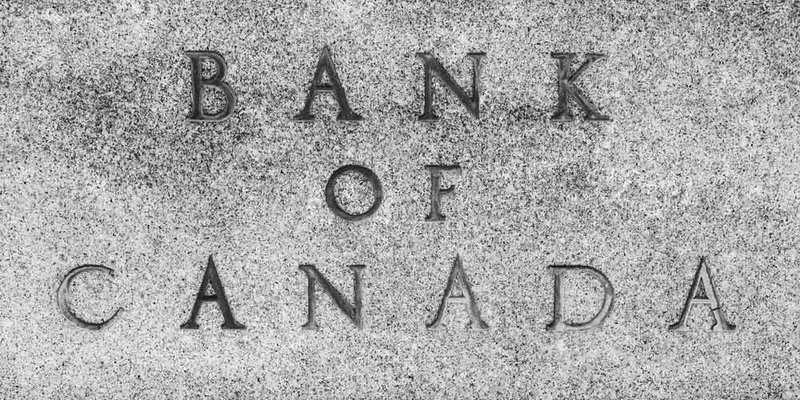
If you are not redirected within 30 seconds, please click here to continue.
Samedi: 10h – 16h HAE

If you are not redirected within 30 seconds, please click here to continue.
If you are not redirected within 30 seconds, please click here to continue.
Bank of Canada Holds Rates in First Announcement of 2019; Oil Prices a Big Factor

In its first announcement of the year, the Bank of Canada decided to hold its overnight rate at 1.75%. It’s also lowering its growth forecast this year for Canada and around the world.
The Bank gave several reasons for its decision to keep rates steady – most notably drawing attention to low oil prices and the continuing international trade conflicts, and showing that not much has changed globally since the last announcement. However, this language used in this announcement is quite dovish compared to what we were hearing earlier in 2018. Forecasters are now predicting only two rates hikes this year, even though they previously predicted we would see as many as three rates hikes in 2019.
Global outlook is weaker
In its statement, the BoC predicted global growth will slow in 2019, pointing particularly to the U.S. While the Bank mentioned that “global economic expansion continues to moderate”, it also said that growth in the U.S. “remains solid but is expected to slow to a more sustainable pace.” One of the major reasons for this is the growing weight of the U.S./China trade conflict on global demand and commodity prices.
Oil prices are lower
The Bank says oil prices are 25% lower than it assumed in the October Monetary Policy Report (MPR), and this weighs on the decision to hold rates. This drop in global oil prices has had a material impact on the Canadian outlook when it comes to trade and income. As such, the BoC is expecting, especially in Alberta, that investment in Canada’s oil sector will weaken further throughout the year. BMO Chief Economist Douglas Porter says oil was the main theme in today’s announcement. He adds, “Perhaps the most notable conclusion that energy sector capital spending will drop 12% this year.”
However, Porter said he remains comfortable with his forecast of two rate hikes later this year, with the first possibly in Q2 and the second in Q4, after October’s federal election.
No mention of markets
What seemed to be missing in the Bank of Canada’s announcement was market pessimism. Despite stock market volatility making headlines for the last two months, there was no mention of the wild swings investors have reportedly experienced in Q4 of 2018.
The Bank did mention that consumer spending and housing investment has weakened more than expected. This comes as housing markets continue to adjust to municipal and provincial measures, changes to mortgage guidelines, and higher interest rates. Moreover, the Bank said it expects household spending to dampen even more this year, possibly due to Canadian investors watching their portfolios and not feeling as confident in their spending.
However, Canada is still on track for more rate hikes
Nonetheless, the Bank maintained a rosy outlook on Canada’s economy, saying it has been performing well overall, growth has been running close to potential, employment growth has been strong and unemployment is at a 40-year low.
To support continued growth, the BoC is looking ahead to exports and non-energy investments backed up by foreign demand, the terms of the new USMCA trade agreement replacing NAFTA, and a lower Canadian dollar (though the Loonie was reportedly up after the rate decision was made this morning).
However, when it comes to GDP, the Bank now only projects growth by 1.7% in 2019 – 0.4% lower than what it predicted in the October outlook.
Despite holding rates for now, the Bank did hint at upcoming increases, saying “the policy interest rate will need to rise over time into a neutral range to achieve the inflation target.”
Inflation, which is the Bank’s core mandate, remains in focus as “core inflation measures remain clustered close to 2%. As expected, CPI inflation eased to 1.7% in November, due to lower gasoline prices.” And inflation is expected to edge lower to below 2% through much of 2019.
The next scheduled announcement of the overnight rate target is March 6, 2019. The Bank’s next full outlook update on the economy and inflation, including risks to the projection, will be published in its MPR on April 24, 2019.
Get money-saving tips in your inbox.
Stay on top of personal finance tips from our money experts!










